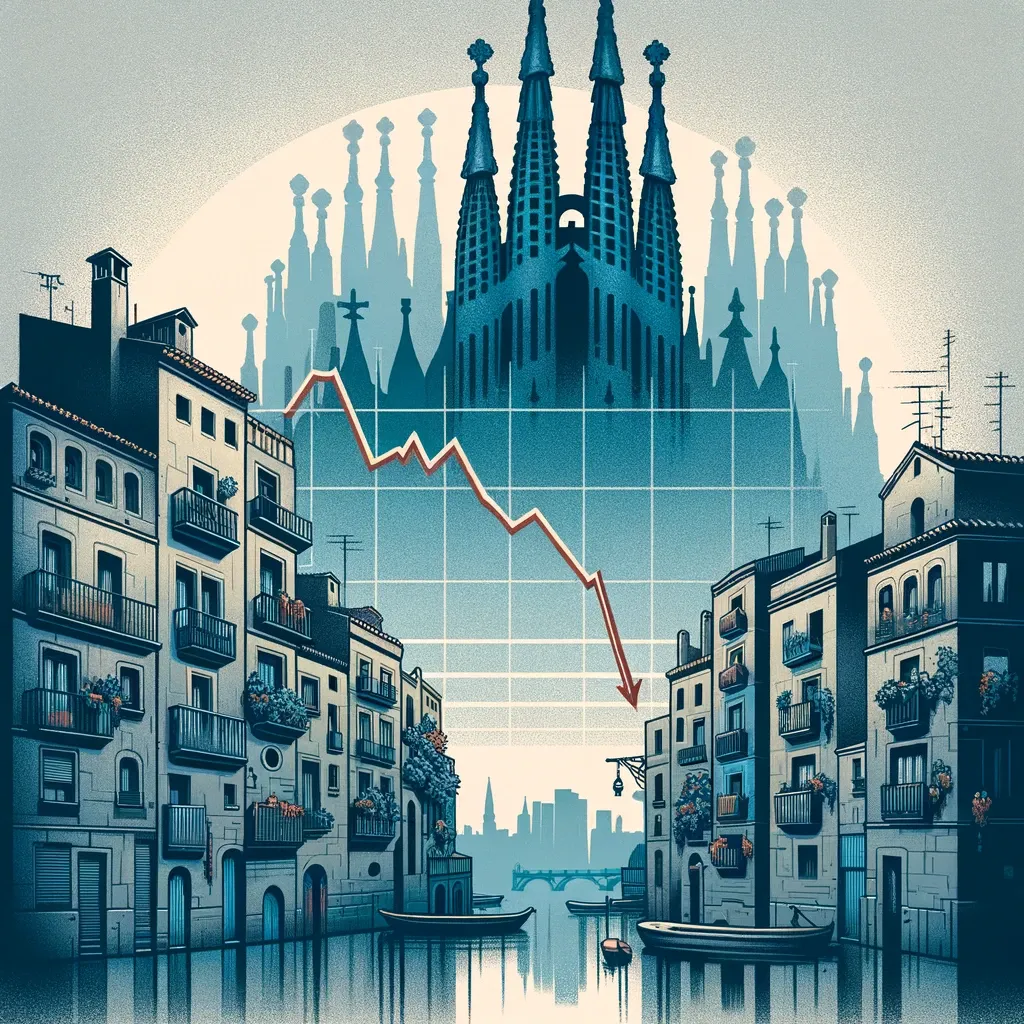The sale of housing in Spain has been declining for six consecutive months.

According to the latest data from the National Institute of Statistics (INE)
The sale of houses in Spain has been declining for six consecutive months. In July, transactions decreased by 10.5%. Since the second month, the real estate market has been shrinking compared to the previous year, month by month. With six months of decline, there is no doubt that the sector has entered a new phase after nearly two years of growth driven by the pandemic. The current drop is related to this. INE data resembles a smooth transition rather than a crash. In July, for example, 48,303 homes were sold in Spain, a number significantly lower than the levels of 2022 and 2021, but very similar to the level of 2019. This leads experts like Francisco Inyarreta, a representative of the Idealista portal, to dismiss a "catastrophic interpretation" of the data. In an analysis directed at the media, Inyarreta notes that last year was "record-breaking" and believes that the market is now "tending towards normalization and is in a healthy environment."
In any case, this is a situation that hasn't been seen in a long time.
If we exclude the most difficult moments of the pandemic (when the market shrank for eight consecutive months), to find such a prolonged negative trend, we would have to go back almost ten years. This was at the end of 2013 and the beginning of 2014, when the sector was still feeling the effects of the real estate bubble that burst in the early 2000s and had hit its lowest point. Now, despite the obvious market contraction, twice as many homes are being sold compared to that time.
Data for July shows that the correction is occurring specifically in the segments that experienced the greatest growth after the pandemic.
The secondary housing market continues to play a major role. Out of the total number of sales in the seventh month, 40,036 are attributed to this segment. This is a significant number, but it is 11.2% lower than a year ago. Meanwhile, new constructions, which have had very low figures for many years, especially compared to the bubble period, are still not developing: transactions of this type in July decreased by 7.4% compared to the previous year. Although the market is still dominated by available residential properties, 3,537 transactions with protected housing represent a 16.5% decrease compared to a year ago.
Only three autonomous communities avoided a decline in July.
This is Extremadura (with a 5.2% increase in transactions compared to July 2022), Asturias (3.8%), and barelyMurcia (0.2%). In all other regions, there were declines, but with very variable percentages, among which the Basque Country (-2.5%) and Galicia (-22.8%) stand out.

Review upwards for 2022
Comparing capabilities can be unpleasant, and the real estate market needs to face it. Since evolution is usually measured on an annual basis (that is, what is happening now compared to last year), the sector is currently being compared to 2022. After the toughest months of lockdown, experts predicted a market revival due to pent-up demand and accumulated savings in many households from forced spending cuts. This resulted in 21 consecutive months of sales growth, culminating in the best year in the last 15 years. This was confirmed by INE, which also published the final data for 2022 this Wednesday.
If the statistical institute mentioned in its preliminary figures that nearly 650,000 homes were sold last year, the final revision confirms that this mark was exceeded. In Spain, exactly 650,265 residential properties were sold, the highest number since 2007 (the last year before the bubble burst). Of this total, 533,807 are existing homes, the highest figure in history, as the focus in the first decade of the century was more on new constructions.
The interest rates also played an important role in the recovery after the pandemic and in changing the situation. At the beginning, the situation was very favorable, as buying a home could be financed at a lower rate than ever before. Since the middle of last year, the situation has changed dramatically. It was in July 2022 that the European Central Bank began a series of consecutive interest rate hikes. The current official rate is 4.5%, marking the sharpest increase in history. Maria Matos, director of Research at Fotocasa, points to this situation: "What is happening is not a halt in the market, but a trend towards adaptation to the new economic situation with rising interest rates," she stated in her latest analysis.
Another real estate portal, Pisos.com, indicates that the INE reports show "annual declines are accelerating further." If the rise in BCE interest rates seems to be nearing its end, the question now is how long the effects will be felt in the real estate market. That is, will it continue to shrink, and will it be able to maintain the levels of 2019, or will it return to lower levels? Currently, the latest data provided by notaries (another statistical source that is generally considered preliminary information before the INE data) indicate significant upheavals.
Comment
Popular Posts
Popular Offers

Subscribe to the newsletter from Hatamatata.com!
Subscribe to the newsletter from Hatamatata.com!
I agree to the processing of personal data and confidentiality rules of Hatamatata













